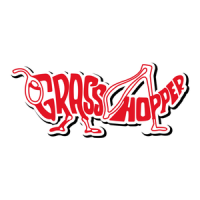9
OPERATIONAL SAFETY
• Read “Operation” section of this manual
before attempting to operate this unit.
•
Do not operate without ROPS deployed.
•
Fenders serve as shields. Do not operate
without them.
•
Keep bystanders away from equipment
while it is in operation.
•
Keep children and pets a safe distance
away. Never direct discharge toward any-
one.
•
Start engine from operator’s seat after dis-
engaging tractor power takeoff and placing
steering levers into the neutral swing-out
position.
•
Keep hands and feet away from under-
neath mower while engine is running. Stay
clear of all moving parts on tractor and at-
tachments.
•
Wear suitable hearing protection when
operating this machine.
•
Never allow anyone behind tractor or in
front of implements when operating.
•
Do not operate in reverse unless absolute-
ly necessary and then only after careful
observation of the entire area behind you.
•
If operator must dismount to make adjust-
ments the engine must not be running.
•
If machine is equipped with a fi xed ROPS,
always wear seatbelt.
•
If machine is equipped with a foldable
ROPS, always wear seatbelt when ROPS
is deployed.
•
When foldable ROPS must be down (i.e.
loading or unloading on an enclosed trail-
er), DO NOT use seatbelt and drive with
extra care.
•
Do not move steering levers from forward
to reverse or reverse to forward position
rapidly. The sudden change could cause
loss of control and/or damage to equip-
ment.
•
Do not operate on steep slopes.
• Do not stop, start or change directions
suddenly on slopes.
•
Use extreme care and maintain minimum
ground speed when traveling or operating
on a hillside, over rough ground, or when
tank allows fuel to expand.
•
Never smoke when handling fuel, and
stay away from an open fl ame or where
fuel fumes may be ignited by a spark.
•
Store fuel in an approved container and
keep it out of the reach of children. Never
buy more than a 30-day supply of fuel.
•
Never store antifreeze or oil in the fuel
container.
•
Always place fuel containers on the ground
away from your vehicle before fi lling.
•
Do not fi ll fuel containers inside a vehicle
or on a truck or trailer bed because inte-
rior carpets or plastic truck bed liners may
insulate the container and slow the loss of
any static charge.
•
When practical, remove equipment from
the truck or trailer and refuel the equip-
ment with its wheels on the ground.
•
If this is not possible, then refuel such
equipment on a truck or trailer from a por-
table container, rather than from a fuel
dispenser nozzle.
•
If a fuel dispenser nozzle must be used,
keep the nozzle in contact with the rim of
the fuel tank or container opening at all
times until fueling is complete.
•
Never use cellular phones or other por-
table electronic devices when handling
fuel.
FILLING THE FUEL TANK
• Always fi ll the fuel tank with the machine
parked on a hard LEVEL surface with the
engine stopped, the park brake set, and
the key removed from the ignition.
• Do not fi ll the fuel tank completely full. Air
space is required in the full tank to allow
the fuel to expand and contract with tem-
perature changes. A valve is located in
the top center of the tank to allow air to
enter and exit the tank.
• Never fi ll the fuel tank when the engine is
hot. Allow several minutes to cool.
• Filling the fuel tank, with the machine
parked on a slope, can cause you to over
fi ll the tank.

